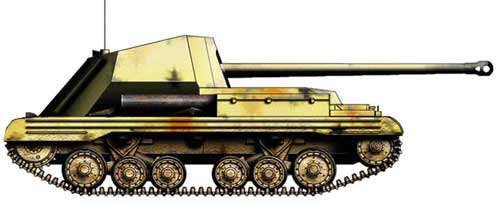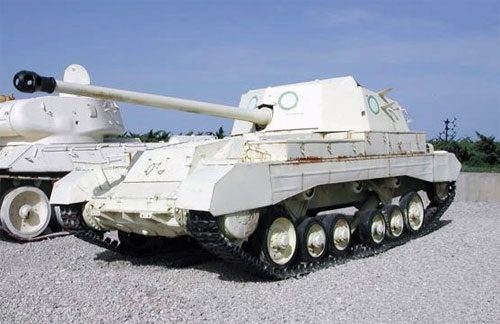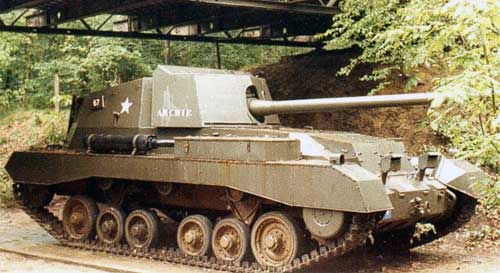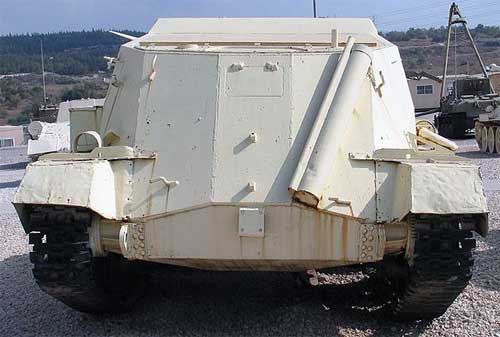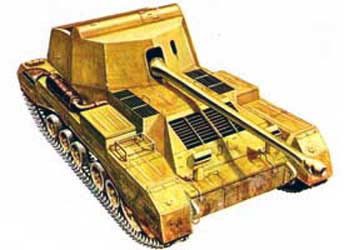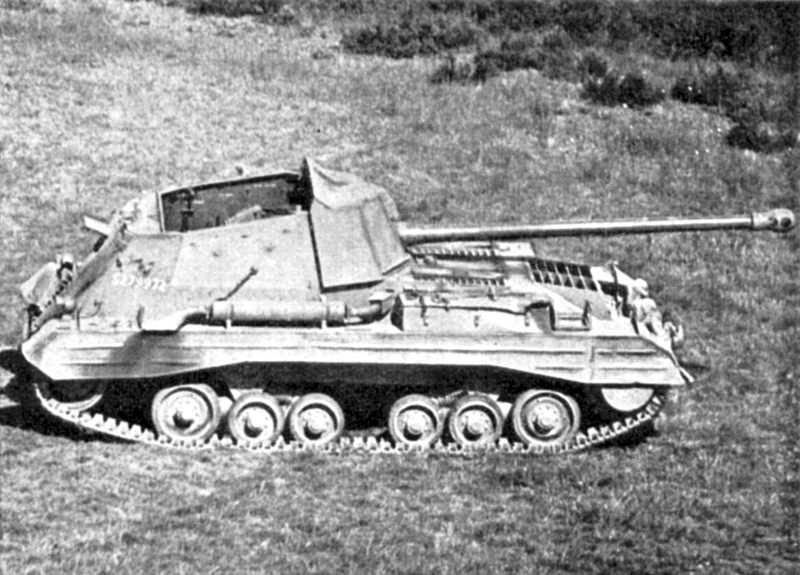
Anti-tank self-propelled artillery installation Archer
Anti-tank self-propelled artillery installation ArcherSAU "Archer" (Archer - archer),
The development of a 17-pounder gun with a high muzzle velocity, comparable in armor penetration to the German 88 mm gun, began in 1941. Its production began in mid-1942, and it was planned to install it on the Challenger and Sherman Firefly tanks. ”, self-propelled guns - tank destroyers. From the existing tank chassis, the Crusader had to be excluded due to such a small size and insufficient power reserve for such a gun, from the available chassis, the Valentine remained the only alternative.
The original idea of installing a 17-pound gun on it was to use the Bishop self-propelled guns with the replacement of the 25-pound howitzer gun with a new gun. This turned out to be impractical due to the large barrel length of the 17-pounder gun and the high height of the armored tube. The Ministry of Supply offered the Vickers company to develop a new self-propelled unit based on the Valentine mastered in production, but withstanding size restrictions when installing a long-barreled gun. This work began in July 1942 and the prototype was ready for testing in March 1943.
new car; named "Archer", built on the chassis "Valentine" with an open cabin at the top. The rear-facing 17-pounder had a limited sector of fire. The driver's seat was located similarly to the base tank, and the frontal cutting sheets were a continuation of the front hull sheets. Thus, despite the large length of the 17-pounder gun, the axis gets a relatively compact self-propelled guns with a low silhouette.
Fire tests took place in April 1943, but changes were required in a number of units, including the installation of guns and fire control devices. In general, the car turned out to be successful and became a priority in the production program. The first production vehicle was assembled in March 1944, and from October the Archer self-propelled guns were supplied to the anti-tank battalions of the British BTC in North-Western Europe. The Archer remained in service with the British army until the mid-50s, in addition, after the war they were supplied to other armies. Of the 800 vehicles originally ordered, Vickers built only 665. Despite the limited tactical capabilities due to the adopted weapon installation scheme, the Archer - initially considered as a temporary measure until better designs appeared - proved to be a reliable and effective weapon.
Performance characteristics
Sources:
|
 The self-propelled unit has been produced since 1943. It was created on the basis of the Valentine light infantry tank. At the same time, the power compartment with the “GMS” liquid-cooled diesel engine placed in it remained unchanged, and instead of the control compartment and the fighting compartment, a lightly armored conning tower was mounted open on top, which accommodates a crew of 4 people and weapons. The self-propelled unit is armed with a 76,2 mm anti-tank gun with a 60 caliber barrel. The initial speed of its armor-piercing projectile weighing 7,7 kg is 884 m/s. A horizontal pointing angle of 90 degrees, an elevation angle of +16 degrees, and a descent angle of 0 degrees are provided. The rate of fire of the gun is 10 rounds per minute. Such characteristics the guns allowed to successfully fight almost all German machines. To combat manpower and long-term firing points, the ammunition load (40 shells) also included high-explosive fragmentation shells weighing 6,97 kg. Telescopic and panoramic sights were used to control fire. The fire could be conducted both by direct fire and from closed positions. To ensure communication on a self-propelled gun, a radio station was installed. Self-propelled guns "Archer" were produced almost until the end of the war and were first used in some artillery regiments, and then were transferred to tank units.
The self-propelled unit has been produced since 1943. It was created on the basis of the Valentine light infantry tank. At the same time, the power compartment with the “GMS” liquid-cooled diesel engine placed in it remained unchanged, and instead of the control compartment and the fighting compartment, a lightly armored conning tower was mounted open on top, which accommodates a crew of 4 people and weapons. The self-propelled unit is armed with a 76,2 mm anti-tank gun with a 60 caliber barrel. The initial speed of its armor-piercing projectile weighing 7,7 kg is 884 m/s. A horizontal pointing angle of 90 degrees, an elevation angle of +16 degrees, and a descent angle of 0 degrees are provided. The rate of fire of the gun is 10 rounds per minute. Such characteristics the guns allowed to successfully fight almost all German machines. To combat manpower and long-term firing points, the ammunition load (40 shells) also included high-explosive fragmentation shells weighing 6,97 kg. Telescopic and panoramic sights were used to control fire. The fire could be conducted both by direct fire and from closed positions. To ensure communication on a self-propelled gun, a radio station was installed. Self-propelled guns "Archer" were produced almost until the end of the war and were first used in some artillery regiments, and then were transferred to tank units.